Our Team
Our team
The Seagrass-Watch team are a dedicated global group of scientists who share a common interest in seagrass and marine conservation, with extensive experience in seagrass research, coastal management assessments including fisheries habitat, resource mapping/assessment and biodiversity globally.
The Team constantly pushes the boundaries of tropical marine science, conducting long-term, large-scale and wide-ranging research including monitoring, data interpretation , modelling, program feedback and publishing scientific documents/publications.
You can find our Team of scientists on ground and in water, mapping, monitoring, diving, collecting vital data/information on the seagrass and marine environment, and back in our lab, analysing and modelling data.
We also work with environmental managers, regulators and policy-makers to assist and translate this knowledge into management and decision-making tools.
Seagrass-Watch HQ is the core of the program. The role of Seagrass-Watch HQ is to develop scientifically rigorous protocols/strategies for seagrass resource assessment, manages/validates data, provide and develop training, coordinate communities and scientists, facilitate the establishment of networks and to continue the development and expansion of the program. Seagrass-Watch HQ also ensures the QAQC protocols for the program are followed and that the program is producing data of high quality, ensuring time and resources are not wasted.
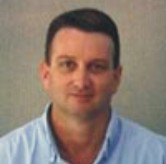
Len McKenzie
Director
Len is Seagrass-Watch Director and Principal Researcher. Len has over 30 years experience as a seagrass and coastal ecosystems ecologist . His research facilitates the protection, conservation, biological diversity, rehabilitation, management and sustainable development of seagrass resources. He is particularly interested in the status and condition of seagrass resources across a range of scales (from local to global), understanding the role of disturbance, determining thresholds of concern and investigating resilience of seagrass ecosystems.
In his role as Principal researcher at James Cook University (a Seagrass-Watch partner), Len is program leader of the Inshore Seagrass component of the Great Barrier Reef Monitoring Program, and leader of a series of projects involving the assessment of condition, trend and risk in coastal seagrass habitats. Len is also the Secretary of the World Seagrass Association.
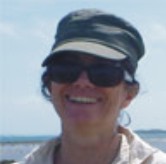
Louise Johns
Scientist
Louise is a Senior Scientist and has over 15 years experience in assessment and management of coastal habitats . She has worked with a wide range of stakeholders and First Nations communities throughout Australia in relation to fisheries habitat and management issues. Louise has expertise in mangrove and saltmarsh taxonomy and has also published the Field guide to common saltmarsh plants of Queensland.
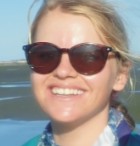
Hayley Brien
Researcher
Hayley is a Researcher at JCU (a Seagrass-Watch partner), working on the Great Barrier Reef Marine Monitoring Program.
The main tasks for this project are to conduct intertidal and subtidal of seagrass habitat.
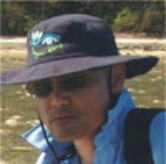
Rudi Yoshida
Researcher
Rudi is a Researcher with Seagrass-Watch HQ and core member of Seagrass-Watch HQ. He has over 20 years experience in seagrass related research and monitoring.
Collaborative Scientists
Asst.Prof. Jamie Seymour
Jcu Australia
Based in Cairns, in Northern Australia, Jamie has been researching and working with venomous and dangerous animals for over 20 yrs.
He has been successfully involved in programs designed to decrease the envenomings of humans by jellyfish, namely in Australia, Timor Leste (for the United Nations), Thailand and Hawaii. His research has been directly responsible for changes in the present treatment protocol for Australian jellyfish stings. He established and is the director of the Tropical Australian Venom Research Unit (TASRU) which is now recognised as one of the premier research groups in the world for the studies of the ecology and biology of box jellyfish and research into medical treatment of box jellyfish envenomings.
Dr Richard Unsworth
Project Seagrass
Richard leads the seagrass ecosystem research group at Swansea University (www.seagrass.org.uk). Richard has more than fourteen years’ experience of research in marine systems and conducts collaborative interdisciplinary research in Europe, Australia, Indonesia and the Caribbean.
He is particularly interested in the consequences of environmental changes on seagrass ecosystem functioning and the implications of this for society. Specific focus is on the implications of seagrass management for global food security.
Richard is also Director of UK based seagrass conservation NGO partner to Seagrass-Watch called Project Seagrass (projectseagrass)
Asst.Prof. Jessie Jarvis
UNCW: Carolina Wilmington
Jessie is a coastal plant ecologist specialising in seagrasses. Jessie’s research aims to understand the effects of environmental stressors on large-scale physiological processes such as plant development and reproduction within seagrass populations and to communicate these results to resource agencies and policy makers charged with their management.
Jessie’s interest is in how environmental conditions impact seagrass life history strategies, reproductive output, and resilience to disturbance over broad spatial and temporal scales.
Dr Siti Maryam Yaakub
Director, (IBCI) SINGAPORE
Based in Singapore, Siti, is co-founder of TeamSeagrass, a seagrass monitoring group in Singapore. Siti has worked for National Biodiversity Centre at the National Parks Board as a Senior Biodiversity Officer.
Dr. Siti Maryam Yaakub, is Director, International Blue Carbon Institute (IBCI).
Asst.Prof. Jamie Seymour
JAMES COOK UNI Cairns, Australia
Based in Cairns, in Northern Australia, Jamie has been researching and working with venomous and dangerous animals for over 20 yrs.
He has been successfully involved in programs designed to decrease the envenomings of humans by jellyfish, namely in Australia, Timor Leste (for the United Nations), Thailand and Hawaii. His research has been directly responsible for changes in the present treatment protocol for Australian jellyfish stings. He established and is the director of the Tropical Australian Venom Research Unit (TASRU) which is now recognised as one of the premier research groups in the world for the studies of the ecology and biology of box jellyfish and research into medical treatment of box jellyfish envenomings.
Dr Richard Unsworth
Project Seagrass Swansea university
Richard leads the seagrass ecosystem research group at Swansea University (www.seagrass.org.uk). Richard has more than fourteen years’ experience of research in marine systems and conducts collaborative interdisciplinary research in Europe, Australia, Indonesia and the Caribbean.
He is particularly interested in the consequences of environmental changes on seagrass ecosystem functioning and the implications of this for society. Specific focus is on the implications of seagrass management for global food security.
Richard is also Director of UK based seagrass conservation NGO partner to Seagrass-Watch called Project Seagrass (projectseagrass)
Asst.Prof. Jessie Jarvis
UNCW: Carolina Wilmington
Jessie is a coastal plant ecologist specialising in seagrasses. Jessie’s research aims to understand the effects of environmental stressors on large-scale physiological processes such as plant development and reproduction within seagrass populations and to communicate these results to resource agencies and policy makers charged with their management.
Jessie’s interest is in how environmental conditions impact seagrass life history strategies, reproductive output, and resilience to disturbance over broad spatial and temporal scales.
Dr Siti Maryam Yaakub
Director, (IBCI) SINGAPORE
Based in Singapore, Siti, is co-founder of TeamSeagrass, a seagrass monitoring group in Singapore. Siti has worked for National Biodiversity Centre at the National Parks Board as a Senior Biodiversity Officer.
Dr. Siti Maryam Yaakub, is Director, International Blue Carbon Institute (IBCI).
Lucas Langlois
JCU CAIRNS, (reasearcher)
Lucas is a Researcher at JCU (a Seagrass-Watch partner), working on the Great Barrier Reef Marine Monitoring Program.
The main tasks for this project are to conduct intertidal and subtidal of seagrass habitat.
who we are
The Seagrass-Watch team are a dedicated global group of scientists who share a common interest in seagrass and marine conservation, with extensive experience in seagrass research, coastal management assessments including fisheries habitat, resource mapping/assessment and biodiversity globally.
The Team constantly pushes the boundaries of tropical marine science, conducting long-term, large-scale and wide-ranging research including monitoring, data interpretation , modelling, program feedback and publishing scientific documents/publications.
You can find our Team of scientists on ground and in water, mapping, monitoring, diving, collecting vital data/information on the seagrass and marine environment, and back in our lab, analysing and modelling data.
We also work with environmental managers, regulators and policy-makers to assist and translate this knowledge into management and decision-making tools.
Seagrass-Watch HQ is the core of the program. The role of Seagrass-Watch HQ is to develop scientifically rigorous protocols/strategies for seagrass resource assessment, manages/validates data, provide and develop training, coordinate communities and scientists, facilitate the establishment of networks and to continue the development and expansion of the program. Seagrass-Watch HQ also ensures the QAQC protocols for the program are followed and that the program is producing data of high quality, ensuring time and resources are not wasted.
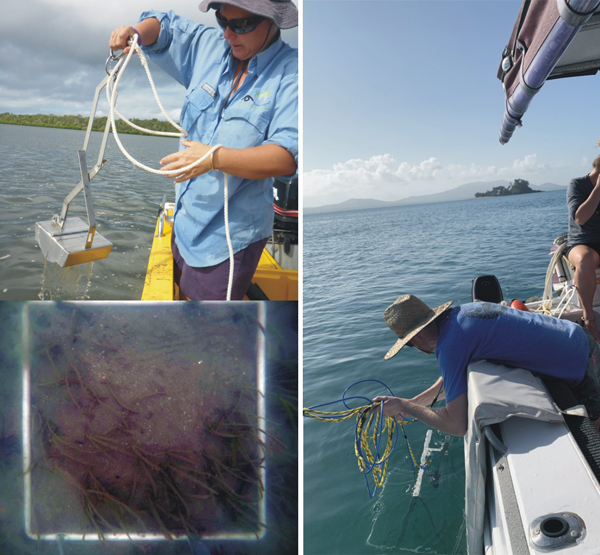
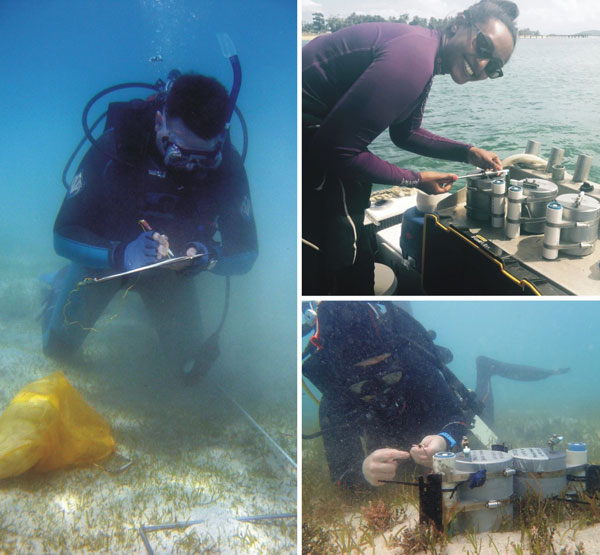
Len McKenzie
Director
Len is Seagrass-Watch Director and Principal Researcher. Len has over 30 years experience as a seagrass and coastal ecosystems ecologist .
Louise Johns
Scientist
Louise is a Senior Scientist and has over 15 years experience in assessment and management of coastal habitats .
Hayley Brien
Researcher
Hayley is a Researcher, working on the Great Barrier Reef Marine Monitoring Programme.
Rudi Yoshida
Researcher
Rudi is a Researcher with Seagrass-Watch HQ and core member of Seagrass-Watch HQ.
collaborative scientists
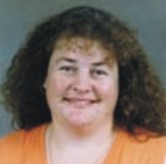
Prof. Michelle Waycott
Professor Plant Systematics (The University of Adelaide)
Michelle is the Chief Botanist at the State Herbarium of South Australia and is the H.B.S. Womersley Chair in Systematic Botany at the School of Earth and Environmental Sciences at the University of Adelaide School of Earth and Environmental Science and State Herbarium of South Australia (DENR)
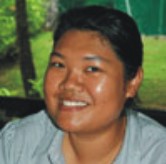
Dr Siti Maryam Yaakub
Head Of Department, Ecological Habitats & Processes (Singapore)
Based in Singapore, Siti, is co-founder of TeamSeagrass, a seagrass monitoring group in Singapore. Siti has worked for National Biodiversity Centre at the National Parks Board as a Senior Biodiversity Officer.
Siti’s work and research interests broadly lie in the areas of ecological restoration, impact assessments, and environmental planning and management.
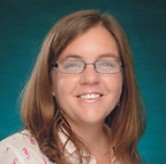
Asst.Prof. Jessie Jarvis
(University of North Carolina Wilmington, usa)
Jessie is a coastal plant ecologist specialising in seagrasses. Jessie’s research aims to understand the effects of environmental stressors on large-scale physiological processes such as plant development and reproduction within seagrass populations and to communicate these results to resource agencies and policy makers charged with their management. Specifically,
Jessie’s interest is in how environmental conditions impact seagrass life history strategies, reproductive output, and resilience to disturbance over broad spatial and temporal scales.
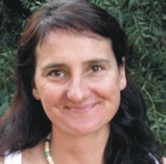
Dr Catherine Collier
Principal Researcher (James Cook University, Cairns)
Catherine is broadly interested in coastal marine ecology, with a particular emphasis on seagrass eco-physiology and ecology. Her current work is focused on flood impacts to seagrasses. This research focus has been triggered by widespread loss of seagrass throughout Queensland and the Great Barrier Reef following record floods in 2011.
Catherine aims to further our understanding of tropical seagrass ecology and to contribute to the protection of seagrass meadows in regions where livelihoods are particularly dependant on vibrant coastal systems.
Asst.Prof. Jamie Seymour
(James Cook university, cairns)
Dr Richard Unsworth
PROject seagrass
Asst.Prof. Jessie Jarvis
(University of North Carolina Wilmington, usa)
Dr Siti Maryam Yaakub
Director, International Blue Carbon Institute (IBCI).
Lucas Langlois
RESEARCHER (JCU)
Local Contact
The Local Contact is main contact in each country/region/location, who is a link in the information and data chain between local communities and Seagrass-Watch HQ. The Local Contact is chosen by a group of volunteers, to act as their representative.
The role of the Local Contact is:
- To be the main point of contact between the volunteer group and Seagrass-Watch HQ;
- To ensure volunteers are suitably trained by Seagrass-Watch scientists;
- To organise the monitoring timetables and advise volunteers when monitoring is due;
- To ensure all Seagrass-Watch program activities in the represented region, are completed in a safe and professional manner;
- To ensure monitoring kits are maintained and audited on a regular basis;
- To submit original data and photographs to Seagrass-Watch HQ;
- To ensure the volunteer group has adequate insurance cover;
- To play a lead role in applications for funding for the group represented, in consultation with Seagrass-Watch HQ;
- To disseminate information from Seagrass-Watch HQ on the status of monitoring and seagrass resources in the region.
PLEASE NOTE: The Local Contact is a volunteer position.
Data interpretation
The Local Contact is not empowered to interpret the data on behalf of Seagrass-Watch.
All data interpretation should be validated and reviewed by Seagrass-Watch HQ. This ensures that the interpretation of data is consistent, unbiased and of scientific merit. This also protects the Local Contact from litigation should the information be of a sensitive or controversial nature.
local contact
The Local Contact is main contact in each country/region/location, who is a link in the information and data chain between local communities and Seagrass-Watch HQ. The Local Contact is chosen by a group of volunteers, to act as their representative.
The role of the Local Contact is:
- To be the main point of contact between the volunteer group and Seagrass-Watch HQ;
- To ensure volunteers are suitably trained by Seagrass-Watch scientists;
- To organise the monitoring timetables and advise volunteers when monitoring is due;
- To ensure all Seagrass-Watch program activities in the represented region, are completed in a safe and professional manner;
- To ensure monitoring kits are maintained and audited on a regular basis;
- To submit original data and photographs to Seagrass-Watch HQ;
- To ensure the volunteer group has adequate insurance cover;
- To play a lead role in applications for funding for the group represented, in consultation with Seagrass-Watch HQ;
- To disseminate information from Seagrass-Watch HQ on the status of monitoring and seagrass resources in the region.
PLEASE NOTE: The Local Contact is a volunteer position.
Data interpretation
The Local Contact is not empowered to interpret the data on behalf of Seagrass-Watch.
All data interpretation should be validated and reviewed by Seagrass-Watch HQ. This ensures that the interpretation of data is consistent, unbiased and of scientific merit. This also protects the Local Contact from litigation should the information be of a sensitive or controversial nature.